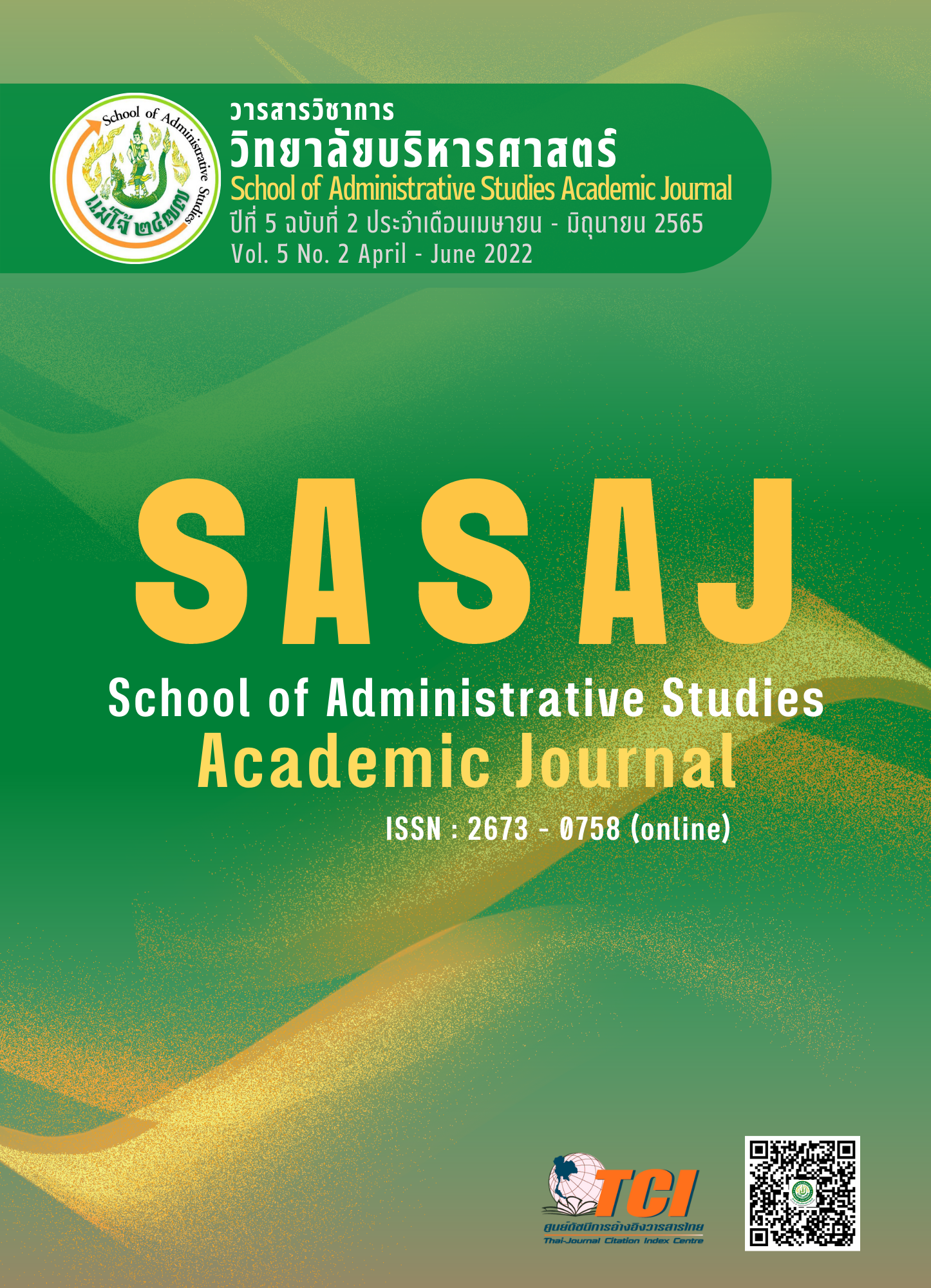Desirable Human Resource Development Model of Hotel Business in Lao People’s Democratic Republic
Main Article Content
Abstract
This study aimed to explore elements and driving factors of desirable human resource development model of hotel business in Lao PDR, while its results would translate in to efficient hotel business performance and serve as human resource development and management guideline towards preparedness for services. This would then be a basis for strengthening business and enhancing the country's sustainable competitiveness in the future. The constructivism and phenomenological strategies of inquiry were used by the author, and the interview form was the research tool for interviewing key informants. They are 22 key informants providing in-depth data on human resource development in hotel business in Lao PDR. Data analysis triangulation verified the reliability of collected data.
The study results indicated that human resource development elements in hotel business in Lao PDR included organizational analysis, assessment, design and tool, implementation, evaluation. It was also found that driving factors of human resource development had 2 dimensions: human resources (executives and employees) and organization (policies, systems, information technology, incentives and laws rules regulations). To enhance contextually appropriate desirable human resource development, hotel business in Lao PDR needs to apply both key elements revealed in the study results and driving factors of human resource development so that sustainability can be achieved.
Article Details

This work is licensed under a Creative Commons Attribution-NonCommercial-NoDerivatives 4.0 International License.
ลิขสิทธิ์
References
ธนาคารกรุงเทพ. (2564). เปิดโมเดล ‘ลาว หลังโควิด’ ปรับแผน 5 ปีฟื้นธุรกิจท่องเที่ยว. สืบค้นจาก https://www.bangkokbanksme.com/en/laos-after-covid-model-plan-to-revive-tourism-business
Alas, R., Karrelson, T., & Niglas, K. (2008). Human resource management in cultural context: Empirical study of 11 countries. EBS Review, 24(1), 49-63.
Audu, J. S., & Gungal, T. (2014). Effects of human resource training and development on productivity in Nigeria hospitality industry. International Journal of Public Administration and Management Research, 2(2), 80-87.
Becker, B., & Huselid, M. (2006). Strategic human resources management: Where do we go from here?. Journal of Management, 2(6), 898-925.
Creswell, J. W. (2003). Research design: Qualitative, quantitative, and mixed methods approaches (2nd ed.). Thousand Oaks, CA: Sage.
Creswell, J. W. (2009). Research design: Qualitative, quantitative, and mixed methods approaches (3rd ed.). Thousand Oaks, CA: Sage.
Creswell, J. W., & Clark, P. V. L. (2007). Designing and conducting mixed methods research. Thousand Oaks, CA: Sage.
Corbin, J., & Strauss, A. (2008). Basics of qualitative research: Techniques and procedures for developing grounded theory (3rd ed.). Thousand Oaks, CA: SAGE.
Garavan. (2007). A strategic perspective on human resource development. Advances in Developing Human Resources, 9, 11-30. doi:10.1177/1523422306294492
Gronoos, C. (1990). Service management and marketing: Managing the moments of truth in service competition. Lexington (Mass.); Toronto: Lexington Books.
Guba, E. G. (1990). The alternative paradigm dialogs. In E. G. Guba (Ed.), The Paradigm Dialog (pp. 45-57). Newbury Park, CA: Sage.
Huselid, M. A., & Becker, B. E. (2010). Bridging micro and macro domains: Workforce differentiation and strategic human resource management. Journal of Management, 37(2), 421-428.
Kane, B., & Palmer, I. (1995). Strategic HRM or managing employment relationship?. International Journal of Manpower, 16(5), 6-21.
Lincoln, Y. S., & Guba, E. G. (1985). Naturalistic inquiry. Beverly Hills, CA: Sage.
Marshall, B., Cardon, P., Poddar, A., & Fontenot, R. (2013). Does sample size matter in qualitative research?: A review of qualitative interviews in IS research. Journal of Computer Information Systems, 54(1), 11-22.
Miller, D. (1998). The resource–based view: Relationship between asset, capabilities, and competencies. New York: Mc Graw-Hill.
Miles, M. B., & Huberman, A.M. (1984). Qualitative data analysis: A sourcebook of new methods. London: Sage.
Mondy, R. W., & Noe, R. M. (2005). Human resource management. Upper Saddle River, NJ: Prentice-Hall.
Nadler, L., & Nadler, Z. (1989). Developing human resource. San Francisco: Jossey-Bass.
Nolan, C. (2002). Human resource development in the Irish hotel industry: The case of the small firm. Journal of European Industrial Training, 26(2), 88-99. doi:10.1108/03090590210421969
Parasuraman, A., Zeithaml, V. A., & Berry, L. L. (1988). SERVQUAL: A multiple-item scale for measuring consumer perceptions of service quality. Journal of Retailing, 64(1), 12–40.
Patton, M. Q. (2002). Qualitative evaluation and research methods (3rd ed.). Newbury Park, CA: Sage.
Prayag, G., & Hosany, S. (2013). Human resource development in the hotel industry of Mauritius: Myth or reality?. Current Issues in Tourism, 18(3), 249-266.
S.A., Al Hrou, & Mohamed, B. (2014). Human resource management practice tourism and hotel industry. In SHS Web of Conferences 4th International Conference on Tourism Research (4ICTR), 12(01076), 1-6. doi:10.1051/shsconf/20141201076
Tourism Development Department. (2017). 2015 Tourism Statistics. Laos: Ministry of Information Culture and Tourism.
World Travel and Tourism Council. (2013). World Travel and Tourism Council: A career in Travel and Tourism. Retrieved from http://www.wttc.org/
Yang, H. O., & Cherry, N. (2008). Human resource management challenges in the hotel industry in Taiwan. Asia Pacific Journal of Tourism Research, 3(4), 399-410.


